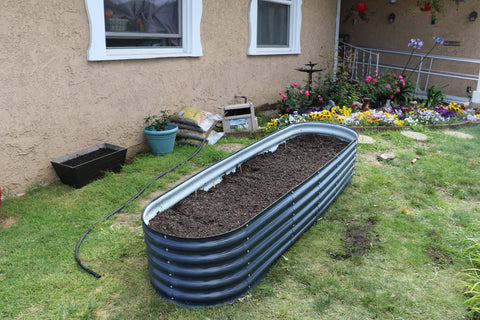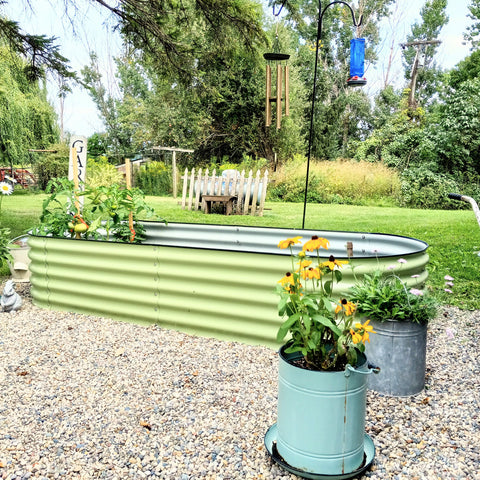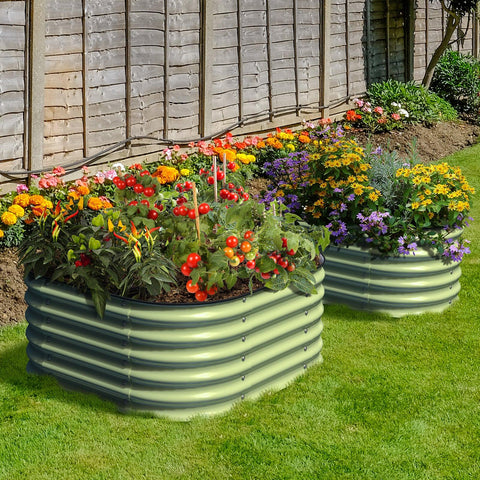Tips from Olle Garden Bed: How to Decay Tree Stumps Quickly
It is actually very simple to remove the stump or let the stump decay faster than nature. By learning how to make stumps decay faster, you can naturally remove stumps without the need for expensive tree services.Encouraging tree stumps to decay naturally can save you a lot of money, not to mention preventing erosion and other damage to your land in the process. The following content also has some reference value for raised garden beds.
Whether there is only one stump in your front yard to rot or hundreds of stumps in your last 40 years to rot, the process is the same.

How long does it take for the stump to decay?
Stubs decay naturally over time, but in most cases it takes a long time for them to completely decay.
Even softwoods of pine trees take 15 to 20 years to completely rot, while more resistant hardwoods may still exist 50 years or more after the trees themselves disappear. How do you make tree stumps decay faster?
The trick is to use some biology and encourage natural biological processes that first decompose wood. With a little encouragement, you can completely rot the stump in just 6 weeks under ideal conditions. Even without ideal conditions, this technology can completely rot the stumps in just 8 to 12 months (rather than decades).
How to decay tree stumps quickly
If you want to make the stump decay faster, the main technique is to increase the surface area so that it is more easily exposed to elements, and at the same time, feed the bacteria and fungi that will decompose the stump. In short, this means drilling holes in tree stumps and then adding nutrients.
The basic steps for decaying stumps are:
- Cut down tree stumps as low as possible: the less decayed materials, the faster they will decompose. Try to wash the stumps as close to the ground as possible.
- Drill holes in the remaining stumps: By drilling holes in the stumps, you will encourage water and nutrients to be trapped in the wood, which will make it decay faster.
- Add nutrients: One of the reasons why trees do not decay quickly is that they are almost all carbon. In order to compost properly, microorganisms need carbon, nitrogen and other micronutrients
- Cover stumps: This helps to retain moisture and promotes faster decomposition of stumps. Any natural mulch can work, from bark mulch to just leaf mulch.
Cut the stump from the lower part to the ground
The first step is self-evident. Keep tree stumps as low as possible. It would be perfect if you could run the electric saw (or hand saw) parallel to the ground and wash the stumps on the ground. Some stumps are very difficult. They are either strange in shape or too big to cut properly, but we should do our best.
The less wood to rot, the faster the stumps disappear.
Drilling holes in tree stumps
Next, drill holes in the stumps.
They should go straight down into the stump so that they form small pockets to capture rain, water and nutrients. Water can decay wood very effectively, and ensuring that stumps are always wet is the first step. "
If you have only one stump to rot, please choose the largest drill in the tool box and use a small electric drill to drill as many holes as possible. Ideally, you need a hole about 1/2 inch wide and a few inches deep. A cordless or corded drill with a sharp bit can drill a hole in about 3 to 5 seconds, and you want to aim at as many holes as possible, as long as you have patience.
Encourage stump decay
At this time, these holes will encourage the stumps to decay and cut the whole decay time in half. A tree stump that takes ten years to decay will disappear in about five years, because these holes will accumulate rainwater.
If you really want the stump to rot, you must feed the bacteria and fungi in the soil, or more specifically, balance the nutrients in the stump, and let the bacteria effectively treat the wood.
Wood is almost completely carbon. If you know about backyard composting, you will know that it is important to balance the proportion of carbon and nitrogen to promote material decomposition.
The ideal ratio of carbon and nitrogen in compost is about 30:1. That is to say, for every part of nitrogen, there are 30 parts of carbon. Wood is naturally about 500 to 1, because it is almost entirely carbon.
Microbes need more nitrogen to break down tree stumps.

What to pour on the stump to encourage decay
There are many ways to add nitrogen to tree stumps to promote decay.
The most effective method is to add pure potassium nitrite particles. In fact, potassium nitrite is sold as "residual removal particles". The commercial oil pan remover solution is almost completely potassium nitrate
If you have a lot of stumps to remove, laboratory grade potassium nitrate is much cheaper and more natural than prepared mixtures containing other potential toxins.
Please note that although potassium nitrate is a natural source of fertilizer, it is not something you want to bathe or let your pet eat. If you have pets around, don't let them eat powder.
If you can't keep your pet away from the stump, I suggest you bring a bag of "yeast nutrient", which is food grade nitrogen used for brewing. It is designed to feed yeast during fermentation and is completely food safe. Please note that "Yeast Nutrient" is different from nutritive yeast. It can only be purchased online or in specialty brewing or home brewing stores.
In addition, you can also use other nitrogen sources, such as ordinary granular fertilizer, or even a few spoons of miraculous growth. Lawn and garden stores sometimes sell bagged "compost boosters", which also works.
In addition to fertilizer, you can also use other things on hand, such as natural buttermilk. In a pinch, urine can also do the job. Yes, you can dissolve the stump by drilling holes in the stump and urinating regularly on the stump. Let your child go to work, and it will soon disappear. (However, it is necessary to drill holes, which is why nutrients are trapped on wood.
Something that can be used to rot tree stumps
So, in summary, once the hole is drilled, you can use any of the following to decay the stump:
Potassium nitrate granules~the most effective method, but not pet safety.
Yeast nutrient~is actually only food grade urea, so it is a source of food safe nitrogen. You can use it around pets/children/etc.
Miracle planting (or other high nitrogen fertilizers)~works well and is easier to obtain locally, but is not as concentrated as potassium nitrate.
Cultured buttermilk~naturally cultured buttermilk is also a good source of nitrogen, which contains probiotics that help digest the stumps. It is much slower than other nitrogen sources. You need to pour more buttermilk on the stump every two weeks to promote decomposition.
Urine~If you lack other things, you can urinate on the stumps regularly to replenish nitrogen. This is the most ineffective method, because the nitrogen content in urine is not as much as the actual fertilizer. However, if you only have one stump to rot, and it is in a private place, you can drill holes to encourage the men in your family to go to work every day.

Things you shouldn't use to rot tree stumps
When decaying stumps, you try to encourage biological activity. Don't use bleach or anything like that.
Although bleach can quickly kill trees, it can also kill microorganisms in wood and disinfect the environment. This is completely contrary to what we are pursuing here.
In addition, things like Epsom Salt can promote decay to a certain extent, because they do increase nutrition. Epsom salt is a kind of magnesium salt, and many microorganisms really need magnesium, at least at a low level. However, it is not a major limiting nutrient, and it will not be as effective as adding nitrogen.
